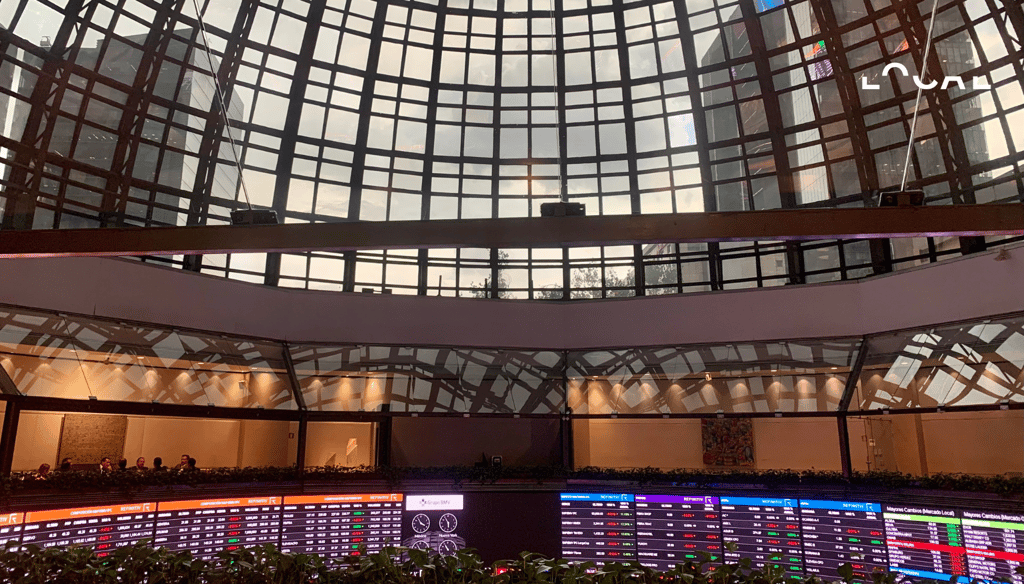One of the most important points of the CDMX is, without a doubt, Paseo de la Reforma. On this centennial avenue converge some of the most important commercial sites and historical monuments of the capital. However, many may be unaware of the existence of the Museum of the Mexican Stock Exchange (MUBO), located on the second floor of this important national financial institution. MUBO presents "Mecánica Nacional", the fourth individual exhibition of Nayarit artist Aldo Álvarez Tostado.
Learning about the origin and role of the Mexican Stock Exchange (BMV) and its historical context opens new lines of reflection on the extraordinary workings of the stock market universe and its repercussions on the modern economy. Inaugurated in 2019, the Museum of the Mexican Stock Exchange (MUBO) proposes a chronological journey from the institution's beginnings in 1894 to its consolidation as the reliable and efficient entity it is today.
The exhibition is developed through a timeline that intertwines different thematic cores. It begins with the origins of the first stock exchanges. Then, it addresses the beginning of the stock market in Mexico. It analyzes the era of the Porfiriato and the Revolution, to finally reach the era of the reconstruction of the country and modernity. During the tour, the blackboards of the place offer quite useful and complete infographics, which makes the financial language less confusing for those who are not familiar with the subject. Also on display are period items, such as the first analog calculators used at the Stock Exchange, articles of incorporation and newspaper clippings announcing Mexico's bright future in the stock market. There is even a life-size replica of the corro and slates, which were the instruments used to record all trading operations before the arrival of the digital era.
Meanwhile, in an annex hall of the MUBO, we find "Mecánica Nacional", a temporary exhibition with the sculptural work of Aldo Álvarez Tostado. His artistic work explores the concepts of country and identity as political manufactures that articulate a formal and poetic language. Through these pieces created over the course of five years, the artist portrays the construction of national identity and the notion of country. By examining the genesis of a nation, he breaks down operations such as the naming of territories, the photography of emblematic places, the formation of historical canons and the creation of foundational myths.
Works such as "En tre'sors au Mexique" ( 2017), which shows a treasure map made up of names of towns with all the letters removed except the 'X', in reference to its historical significance and discussions about the spelling of Mexico, stand out. The piece "La X en Diosx de Estadio" ( 2022) resists gender binarism; and the National Coat of Arms is transformed and folded into "Pesadilla sin Peso" ( 2022) to symbolize identity conflicts.
The northern border is represented in "Other Extremes" (2018) by a chain that separates Latin America from Anglo-Saxon America; and works such as "On monumentality: Yampolsky in Danghu" (2018), "Albers in Tenayuca" (2018) and "The Day After" ( 2023) explore the architectural vision from a foreign perspective. "The Most Contemporary Spirit of the World" ( 2023) materializes Barragán's expression, and the exhibition compiles the artist's main poetic resources, revealing his skill in wordplay and handling of sculptural-architectural language. "Mecánica Nacional" stands as a fourth solo exhibition that brings together various pieces, inviting us to delve deeper into the work of Álvarez Tostado.
With a spectacular view of the former Glorieta de la Palma and its surroundings, the MUBO (Av. Paseo de la Reforma 255, Mezzanine) becomes the ideal pretext to know inside the famous glass vault of the Mexican Stock Exchange, while acquiring some knowledge in finance and economics. Admission is completely free and it is open from Sunday to Friday, from 10:00 am to 5:00 pm. For more information, visit their official website.
